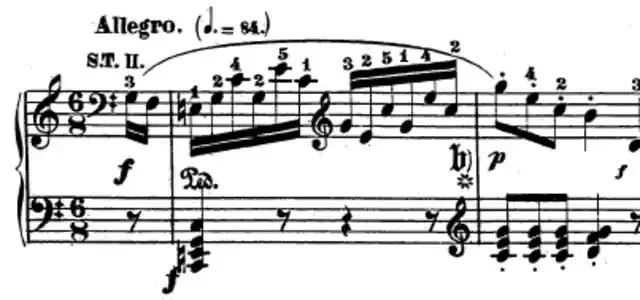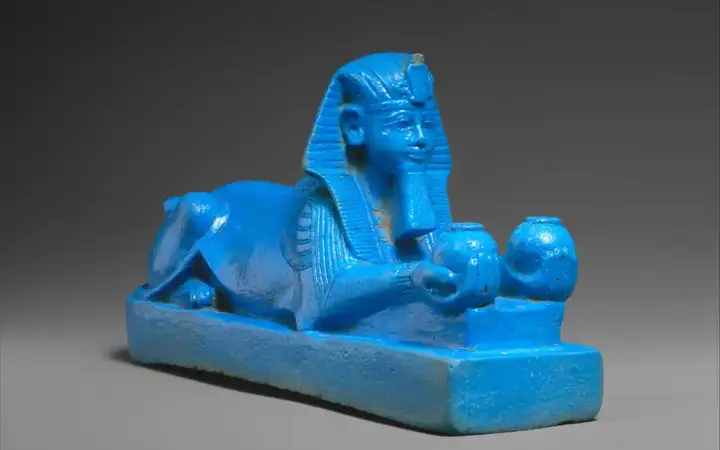How did you start blogging music?
Whether it's group singing to boost mood and feelings of social inclusion, or making musical instruments for ceremonial and military use, musical rituals have been around since the dawn of time. Some of the oldest musical instruments that survive today are 50,000-year-old psalms, carved from bones. We've been playing and listening to music for thousands of years – but when did we start writing it down?
It all started with the ancient Greeks.

There are very few surviving examples of music written from ancient Greece. But we know that the Greeks were decisive in laying the foundation for music theory. Pythagoras, who lived from about 570 to 500 BC, was among the Greek theorists who explored the mathematics of music. Together, Pythagoras and his disciples first formulated the "ideal" periods of the fifth, fourth, and second octaves, pioneering the concept of musical interval that has become an integral part of our musical language today. The Greeks also invented the quadruple of tones, which describes a series of four tones within a musical scale.
Recommend
A thousand years later, their interest spread to Western Europe.
In the sixth century, Boethius, a member of the Roman Senate, wrote the influential De Institutione Musica, bringing Pythagoras' understanding of mathematics and music to medieval Western Europe. A few decades later, Pope Gregory – the man credited with inventing the Gregorian hymn – began Europe's first school of music: Schola Cantorum. By this time, it had become very fashionable to learn music. Melodies were often learned and transmitted by ear, as there was no formal way to write down the melody yet. This necessitated an updated music notation system. The scholar Saint Isidore of Seville, tired of forgetting music all the time, said: "Unless sounds are kept in the memory of man, they perish, because they cannot be recorded." In 650 AD, Saint Isidore developed a new system for writing music, using notation called "neomis". Vocal hymns, which were popular music at the time, were written on parchment with text, and on top of them were punctuation marks, to indicate the circumference of the melody.
350 years later, Guido Darizzo introduced a new system.

Around 1000 AD, the Italian musicologist Guido Darizzo saw that people struggled to learn hymns from "Neum" and thought that there should be a more accurate notation system. He created a system of four-line tones (an early version of the five-line tones we use today), and organized tones into groups called "hexacord." He also added the signs of time and invented the solfege – the framework we know today as "do, ri, mi, fa, so, no, t, du". But music notation was still missing one thing: the duration of notes.
Around 1250, Franco of Cologne invented a system of symbols for different note durations, consisting mostly of square black or diamond-shaped note heads without stems. In 1320, Philippe de Vitri built his idea, devised a system of standard timelines for short pieces of music, short pieces of music, and short pieces of music. By 1450, white notes began to outperform black musical notes, so most of the values of musical notes were written with white note heads as if you were writing short or short pieces of music. Then in the seventeenth century, note values began to appear more complete. During the seventeenth century, the development of music notation continued according to the music of Renaissance and Baroque composers. When instrumental music overtook vocal music as the most popular genre, it was necessary to change notation. Instrumentalists still used the Guido Darizzo grading and notation system, albeit a slightly more modern version. But they found that there is still not enough trend inside the blogging music. Therefore, composers began to introduce tape lines and performance trends, including dynamics, rhythm and mood.
Modern amphitheater notation

Modern music notation is used by musicians from many different musical genres around the world. A musical amphitheater (or musical amphitheater, in British English) consists of 5 parallel horizontal lines that act as a frame through which tones are defined by placing oval note heads on (i.e., intersecting) the lines of the musical amphitheater, between lines (i.e. in spaces) or above and below the musical amphitheater using small additional lines called notebook lines. Music notation is read from left to right, making it difficult to adjust music for texts from right to left.
The tone of the tone is determined by the vertical position of the tone head within the runway, and can be adjusted by accidental markers. The duration (tone length or tone value) is determined by the shape of the tone head or by adding the tone leg as well as beams or flags. A hollow oval without a stem is a full or semi-abbreviated tone, a hollow rectangle or hollow oval without a stem with one or two vertical lines on both sides is a double or abbreviated full tone. The hollow oval with a stem is a semitone or small tone. Solid ovals always use stems, and can indicate quartile tones or, with the addition of beams or flags, smaller subdivisions. Additional symbols such as dots and ties can prolong the duration of the tone.
Is music notation still evolving?
The fifties saw the invention of graphic musical notes, which combine art and music in a kind of musical map, giving the performer a guide, not a strict instruction, on how to play music. As such, graphic musical notes are often interpreted as a reaction against the highly detailed musical notes of the twentieth and twenty-first centuries. So, what will the musical notes look like in the year 3000? You can completely go back to the basics again, leaving it all for the performer to interpret the music as he wishes. Or you can become more artistic
![]()
The strange long history of Teflon: the non-subversible product that nothing sticks to
The Long, Strange History of Teflon: The Indestructible Product Nothing Seems to Stick To more- ADVERTISEMENT
![]()
Golden hydrogen can change the course of the globe
Golden hydrogen, naturally formed deep underground, offers a clean, carbon-free energy source. It's abundant, renewable, and doesn't emit harmful gases, making it a game-changer for sustainable energy. Scientists are using AI to detect surface markers pointing to its presence, opening new frontiers in the search for eco-friendly fuel. more- ADVERTISEMENT
![]()
Breaking the code of learning: does repetition really help?
Rote memorization—repeating facts to remember them—can help with basics like math tables or alphabets, especially in kids. But it’s often boring, lacks understanding, and doesn’t help apply knowledge in real life. While it boosts memory short-term, deeper learning methods work better for long-term success. more- ADVERTISEMENT
![]()
You don't lack purpose, you lack focus
You Are Not Lacking Purpose, You Are Lacking Focus more- ADVERTISEMENT
![]()
How to identify and transform a bad manager: lessons learned and the path to success
Bad managers hurt morale, kill productivity, and damage a company’s success. They micromanage, lack empathy, and avoid conflict, leading to high turnover and chaos. But the journey to becoming a good manager starts with self-awareness, better communication, and trust—turning toxic workspaces into thriving ones. more- ADVERTISEMENT
![]()
The Rise of Civilization: How Bread Dough Shaped Human History
Bread dough began as a humble mix of grains and water but evolved into a symbol of civilization, shaping cultures and economies. From Egypt’s sacred loaves to modern artisan creations, it blends tradition with innovation, remaining a staple that connects humanity through time and taste. more- ADVERTISEMENT
![]()
The Historical Arch of Egyptian Blue: A Journey Through Time
The Historical Arc of Egyptian Blue- A Journey Through Time more- ADVERTISEMENT
![]()
Elon Musk - mad genius or unlimited diligence?
Elon Musk, dubbed the "Real Iron Man," is a bold, creative dreamer known for his ambition to colonize Mars, controversial tweets, and strict leadership style. Loved and hated, he's a complex figure who never shies away from challenges or attention, always pushing boundaries with fearless determination. more- ADVERTISEMENT
![]()
Is time travel possible? Astrophysicist explains the science behind science fiction
Time travel fascinates us, but science shows it’s tricky. Einstein’s theory reveals time slows down at high speeds—astronaut Scott Kelly aged slightly slower than his twin Mark. Wormholes might allow time jumps, but they remain unproven. For now, telescopes offer a glimpse into the past, not time machines. more- ADVERTISEMENT
![]()
Why can't bots click on the "I'm not a robot" box on sites?
Why Can’t Robots Click the 'I’m Not a Robot' Box on Websites more- ADVERTISEMENT





















